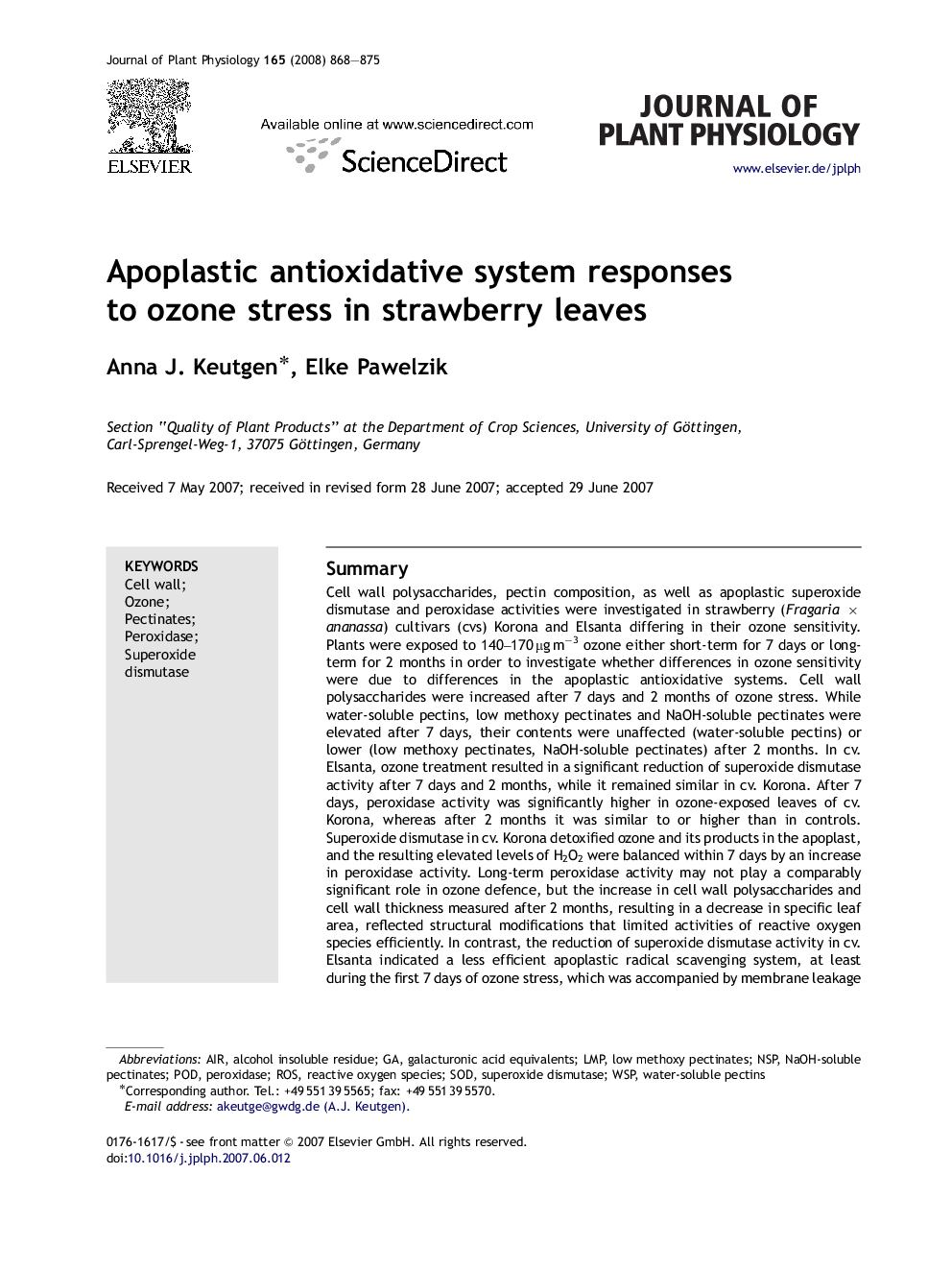| Article ID | Journal | Published Year | Pages | File Type |
|---|---|---|---|---|
| 2057261 | Journal of Plant Physiology | 2008 | 8 Pages |
SummaryCell wall polysaccharides, pectin composition, as well as apoplastic superoxide dismutase and peroxidase activities were investigated in strawberry (Fragaria × ananassa) cultivars (cvs) Korona and Elsanta differing in their ozone sensitivity. Plants were exposed to 140–170 μg m−3 ozone either short-term for 7 days or long-term for 2 months in order to investigate whether differences in ozone sensitivity were due to differences in the apoplastic antioxidative systems. Cell wall polysaccharides were increased after 7 days and 2 months of ozone stress. While water-soluble pectins, low methoxy pectinates and NaOH-soluble pectinates were elevated after 7 days, their contents were unaffected (water-soluble pectins) or lower (low methoxy pectinates, NaOH-soluble pectinates) after 2 months. In cv. Elsanta, ozone treatment resulted in a significant reduction of superoxide dismutase activity after 7 days and 2 months, while it remained similar in cv. Korona. After 7 days, peroxidase activity was significantly higher in ozone-exposed leaves of cv. Korona, whereas after 2 months it was similar to or higher than in controls. Superoxide dismutase in cv. Korona detoxified ozone and its products in the apoplast, and the resulting elevated levels of H2O2 were balanced within 7 days by an increase in peroxidase activity. Long-term peroxidase activity may not play a comparably significant role in ozone defence, but the increase in cell wall polysaccharides and cell wall thickness measured after 2 months, resulting in a decrease in specific leaf area, reflected structural modifications that limited activities of reactive oxygen species efficiently. In contrast, the reduction of superoxide dismutase activity in cv. Elsanta indicated a less efficient apoplastic radical scavenging system, at least during the first 7 days of ozone stress, which was accompanied by membrane leakage and contributed to accelerated leaf senescence. Long-term, the reduction of intercellular air space volume in leaves contributed to ozone tolerance of cv. Elsanta as in cv. Korona.
